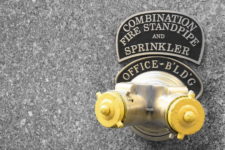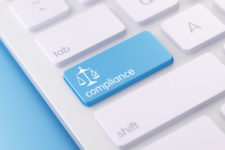Welcome back to SiteCompli’s Ask the Expert series!
In this installment, we interviewed the experts at Original Energy, an energy management company based in New York. Original Energy provides energy services and consulting, specializing in fuel oil procurement, natural gas and electricity products, Local Law 87/Benchmarking, and project management for oil-to-gas conversions and energy efficiency retrofits.
We spoke with Kenneth Camilleri, the General Manager at Original Energy, to discuss some of the most frequent pitfalls customers stumble into when dealing with their buildings’ energy compliance. One regulation he noticed clients having trouble with is Local Law 87 – according to Ken, one of the biggest LL87 issues is the lack of understanding around the requirements, and the purpose of the law itself. With his help, we’re here to clear that up:
Local Law 87 (LL87) – What Is It?
Local Law 87 is a regulation initially enacted in December 2009 under New York City’s Greener, Greater Buildings Plan. LL87 requires all buildings comprising 50,000 square feet to undergo an energy audit and conduct retro-commissioning of base building systems (including the building envelope, boiler and domestic hot water, ventilation and lighting systems) every 10 years. The results of these tests are then summarized in an Energy Efficiency Report (EER) that’s submitted to the Department of Buildings by December 31st of the year that it’s due (depending on the building’s block number).
Want more information on the process/specifics? Check out SiteCompli and NYC’s LL87 resources:
Why is it important?
The purpose of Local Law 87 is to maximize a building’s energy efficiency. Ken says, “although many owners see LL87 as a cost, it’s helpful to look at the long-term benefits it can provide. For example, if there’s a steam leak in your building, your boiler is forced to work harder and burn more fuel than otherwise necessary. An energy audit would catch and fix this problem, saving you money that might have been wasted on excess fuel.” Energy audits can also include recommended energy conversation measures (ECMs) which reduce the amount of energy consumed and minimize the owner’s energy expenditures, saving money in the long run.
Local Law 84
Another regulation frequently associated with Local Law 87 is Local Law 84, also called the NYC Benchmarking Law. LL84 requires building owners to annually measure their annual energy and water consumption (this process is called benchmarking, hence the “Benchmarking Law” moniker), and submit results to the DOB by May 1st of the following year.
A recent update to LL84 involves the size of buildings required to comply. Previously, only buildings spanning 50,000 square feet or more were required to submit annual benchmarking reports (matching the size requirements of LL87). However, beginning in 2018, owners of mid-size buildings that are between 25,000 sq. ft. and 50,000 sq. ft. will also be required to benchmark. You can read more about this update in our previous Blog post.
To Recap: Local Law 87 vs. Local Law 84
LL87 involves recommendations for maximizing a building’s energy efficiency through analysis of the building’s base functions. On the other hand, LL84 is data collection and reporting on a building’s energy use.
Violation Watchouts
The penalty for failing to complete your Local Law 87 EER is an initial penalty of $3,000, with an additional $5,000 per year the EER remains un-submitted. With 10 years between reports, that fine can build significantly.
The penalty for failing to compete your LL84 Benchmarking Report by the May 1st deadline is $500. Three additional deadlines of August 1st, November 1st, and February 1st (of the following year) are set, with an additional $500 fine for each quarterly deadline missed.
Actionable Takeaway
“The best way to stay on top of your LL87 regulation compliance is to make sure you know your building’s working timeline,” Ken says. Between the inspections needed to complete an energy audit and the testing necessary for retro-commissioning, complying with LL87 can take between 9 – 12 months to complete. Owners should begin preparing to comply up to a year before their deadline as a best practice.
For more information on the LL84 and 87 processes, reach out to the team at Original Energy here.
To read SiteCompli’s recap of Original Energy’s presentation on oil storage tanks, click here.




